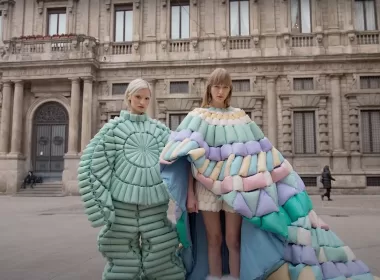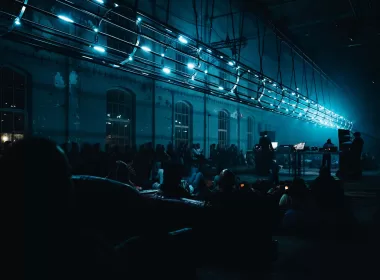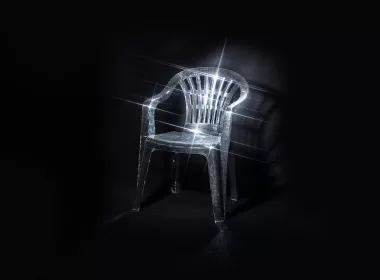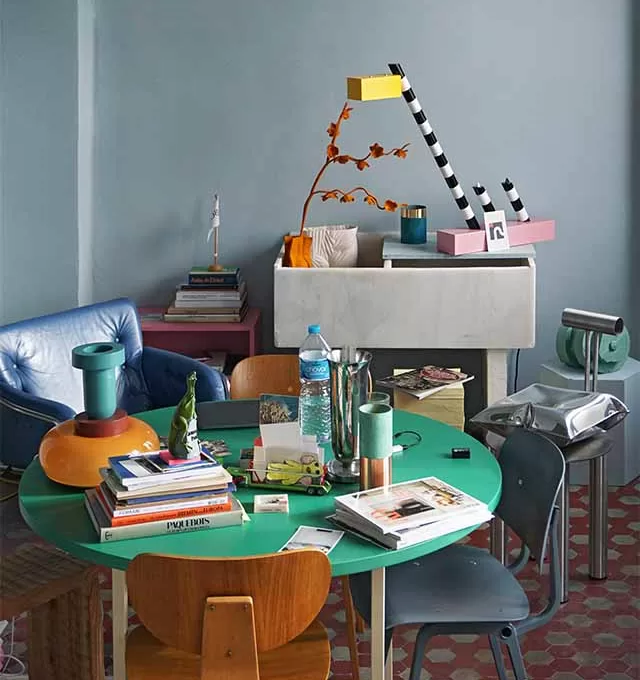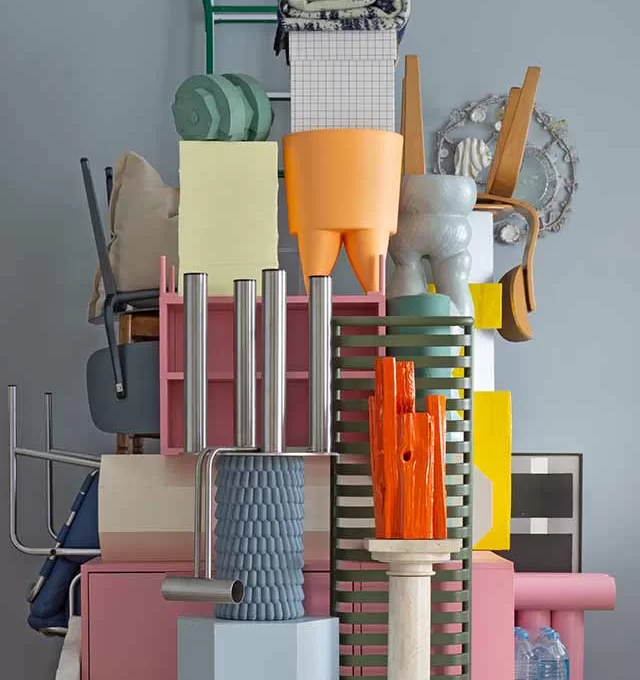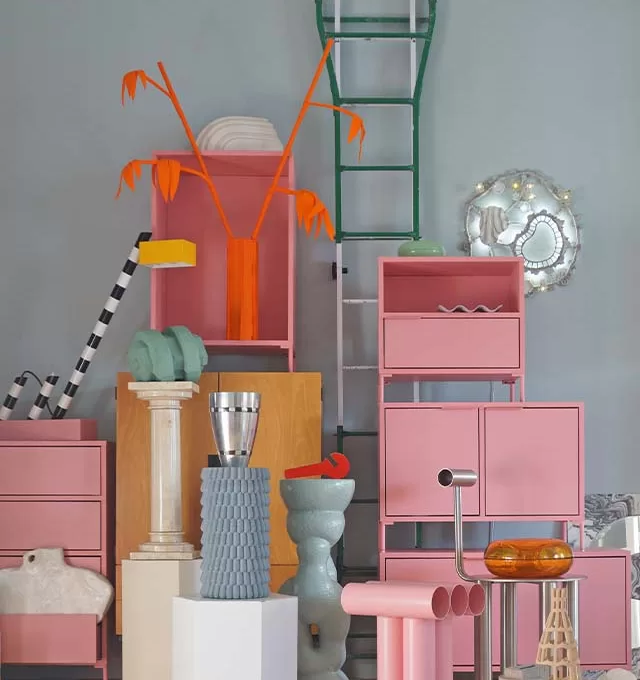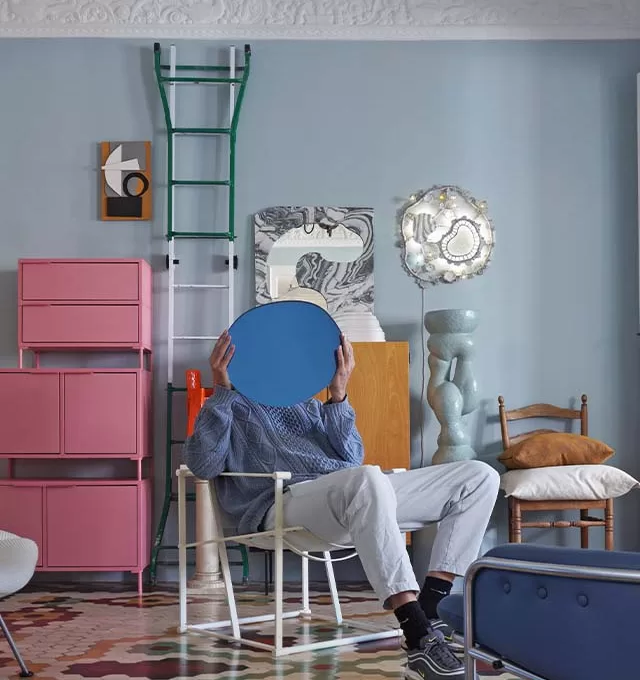Berry Dijkstra is a design aficionado and collector After a childhood full of admiration for his father’s curated collection of red sports cars, it’s no wonder he found himself drawn to the world of collecting. However, his journey didn’t end stop there; it blossomed into a lifelong passion for contemporary design, beginning with his first purchase of versatile wall-mounted cabinets from a Pastoe factory sale. Berry Dijkstra shares insights into his method of discovery, and how his mantra “the eye has to travel” guides his quest for new pieces, particularly those crafted by young designers. His living space, a fusion of both apartment and studio, serves as a sanctuary and showcase, with every object carefully arranged to evoke joy and inspiration.
How does one manage a burgeoning collection? Berry reveals that the secret is to advocate for ample space to allow each piece to breathe, while also embracing the art of stacking and arranging, which allow for dynamic displays to evolve with the seasons. Acquiring design objects transcends mere transaction; it’s a deeply emotional journey where each piece must resonate on a personal level – Dijkstra says. While some may view design as an investment opportunity, he sees it as an expression of passion, a sentiment echoed in his eclectic collection of vintage and contemporary treasures.
Among his prized possessions stands the Polyphone series by Barry Llewellyn, a testament to the boundless creativity of collectible design. As the landscape of collectible design continues to evolve, Berry Dijkstra envisions a future where accessibility and inclusivity reign supreme, welcoming a wider audience into the fold.
What is your background and what was the path that led you to become a collector?
Berry Dijkstra – As a kid, I was always intrigued by my father’s display cabinet that was situated in a prominent place in the living room and filled with signal red sports cars. The front, sides, and shelves were made out of glass, and the backdrop was a mirror, similar to. the ones you see in museums, but ours looked more postmodern since this was in the 80s. The cabinet was filled with a carefully curated collection of red Ferraris Lamborghinis, and Alfa Romeos. So, that’s how the collecting seed was planted.
What was the first design item you bought? Can u tell us a little about it?
Berry Dijkstra – I bought my first contemporary furniture at a Pastoe factory sale. Three small wall-mounted cabinets in different shades of greyblue. You could make different compositions with the cabinets, whether it be a playful setup scattered over the wall or a combined setup in 1hanging cabinet. 15 years later, nothing has changed., I still love the color greyblue, and I love to play with setups.
What method do you use to find new pieces to add to your collection?
Berry Dijkstra – “The eye has to travel” For work and pleasure I visit a lot of fairs, shows, galleries, events, and of course I spend hours scrolling online. When it comes to buying contemporary design, I focus mainly on young designers. It’s important to support their practice in an early stage of their career. It’s also really cool to see them grow, develop and mature. What I find interesting is how soon as they are represented by a gallery, the prices go up.
What role do objects have in your daily life?
Berry Dijkstra – My current apartment is a combination of an apartment and a studio. I’m surrounded by my collection all day long. It’s the first thing I see when I wake up and the last before I go to bed. They bring me joy when I use them and by their looks. I create compositions with my furniture and accessories, which I photograph and publish on my Instagram. I have been collecting for many years, so my collection is layered and connected to different periods in my life. Therefore, they play an important role in my life.
How do you manage space to display or store your collection?
Berry Dijkstra – Multiple rooms will helps. They need space to come to life and air to breathe. Or, on the other side of the spectrum, bring them all together by stacking them or arranging them in a condensed way. I’m always moving the furniture through the rooms. It depends on the season where I place them and it’s always nice to have a different vistas.
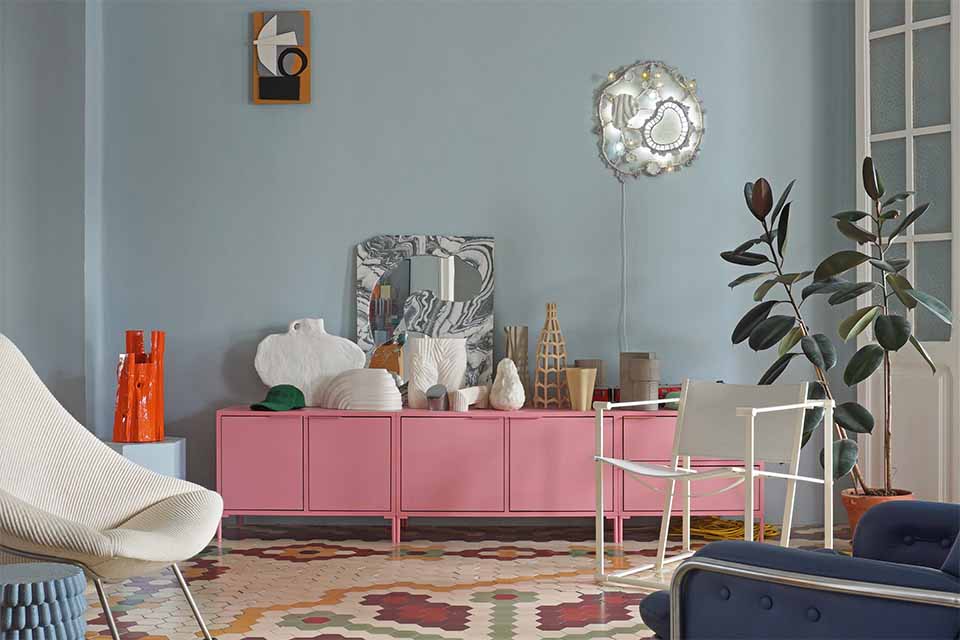
How does the acquisition of objects work for a design collector? Do you usually buy or do you also trade?
Berry Dijkstra – For me design is emotion, so a piece has to speak to me. Like I said I focus on young designers who which I meet during shows or online. The piece needs to be functional, but most of the time I don’t use it functionally. Most of the items in my collection I bought myself. I find it important to support young designers and it keeps the boundaries clear. Sometimes an item is gifted, which I always mention when I post it for the first time.
Could purchasing a design object become an investment or is it already one?
Berry Dijkstra – I’m not a fan of the word “investment”. Go into crypto if you want to earn (or lose) quick bucks. For me, design is emotion., I love the stories behind the product, the materials, shapes, etc. Besides contemporary, I also have a collection of vintage items, which have become icons over the years. The first editions and rare models in original condition are a good way to store money visually and use them, which also means that there is a chance of damaging them. But well, I prefer that instead of putting furniture in storage to keep them in mint condition.
What is the most precious piece in your collection and what is its history?
Berry Dijkstra – Back in 2022, I was the curator for the curated section at Collectible in Brussels. While When I was going through the applications, my jaws dropped when I saw the Polyphone series by Barry Llewellyn; A mesmerizing and ornamental collection of wall / light objects made from various materials like glass and ceramics which are put together in such a poetic way and in perfect harmony. It speaks to the imagination. Some, some people see a super zoom bacteria, and others a coral reef.
How do you see the near future of collectible design?
Berry Dijkstra – In recent years / decade collectible design has become more and more popular. Which is a good thing, although it’s a very high-end market for a relatively small group of people. Personally I would love to see if it becomes more democratic and inclusive and available for a bigger audience instead of a way of investing money.
What is the idea behind your super crowded and stacked displays?
Berry Dijkstra – I have always been drawn to compositions. Accidental sculptures in the streets made from piles of stg moment, was in 2018 when I had to bring together my Pastoe collection for a photoshoot. To get everything in 1 frame I stacked some cabinets and chairs. I kept it this way after the shoot and from there I started building bigger temporary compositions which had nothing to do with functionality. It is all about shapes, materials, colors and an attempt to find a balance without losing
loosing a “messy” feeling. This combined with shooting images of the installation from the front and a very low position created an architectural feel and my signature uff, or the skyline of Rotterdam, which looks from some angles like a weird copy-paste Photoshop experiment. Decades of styles, forms, and materials which become a layered become a layered and interesting image with some build in friction and tension. Playing with furniture has always been a factor in my interior, mostly in
small arrangements of accessories, bringing different worlds together.



